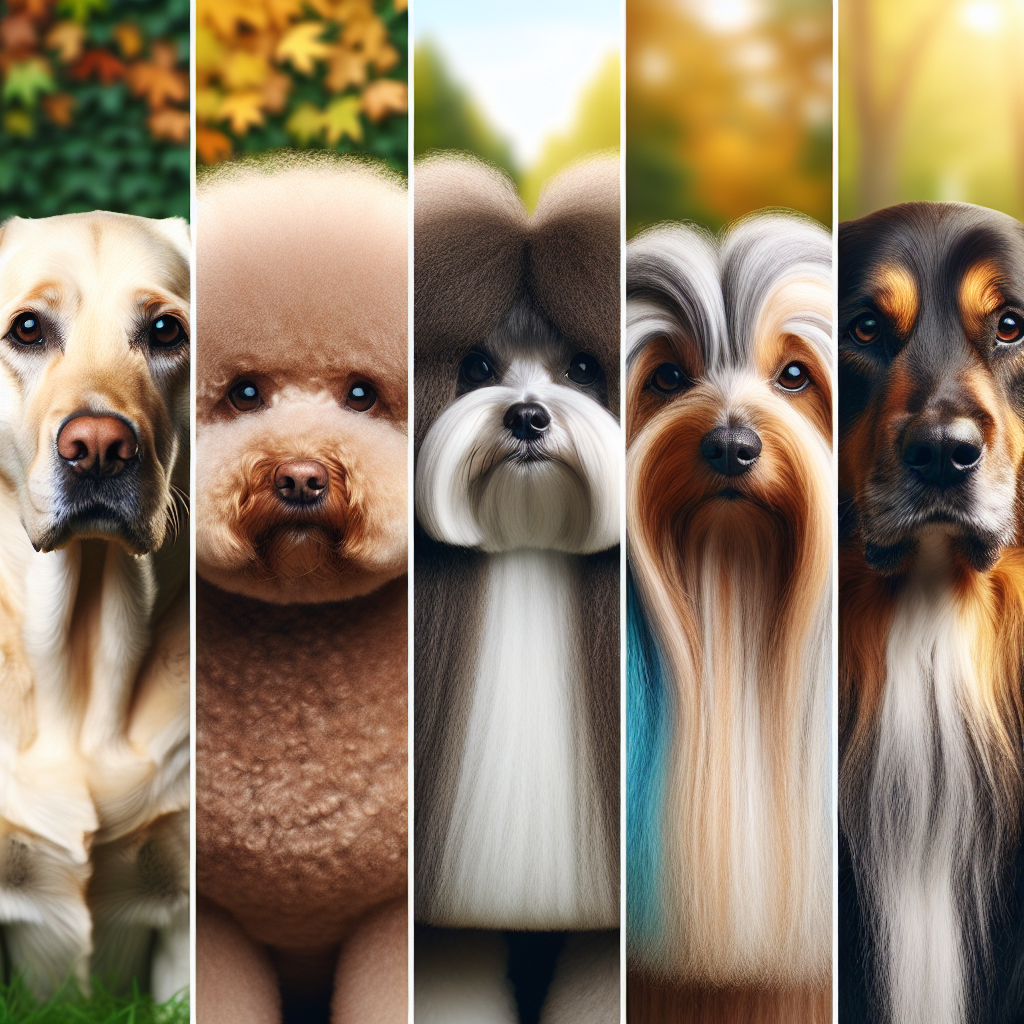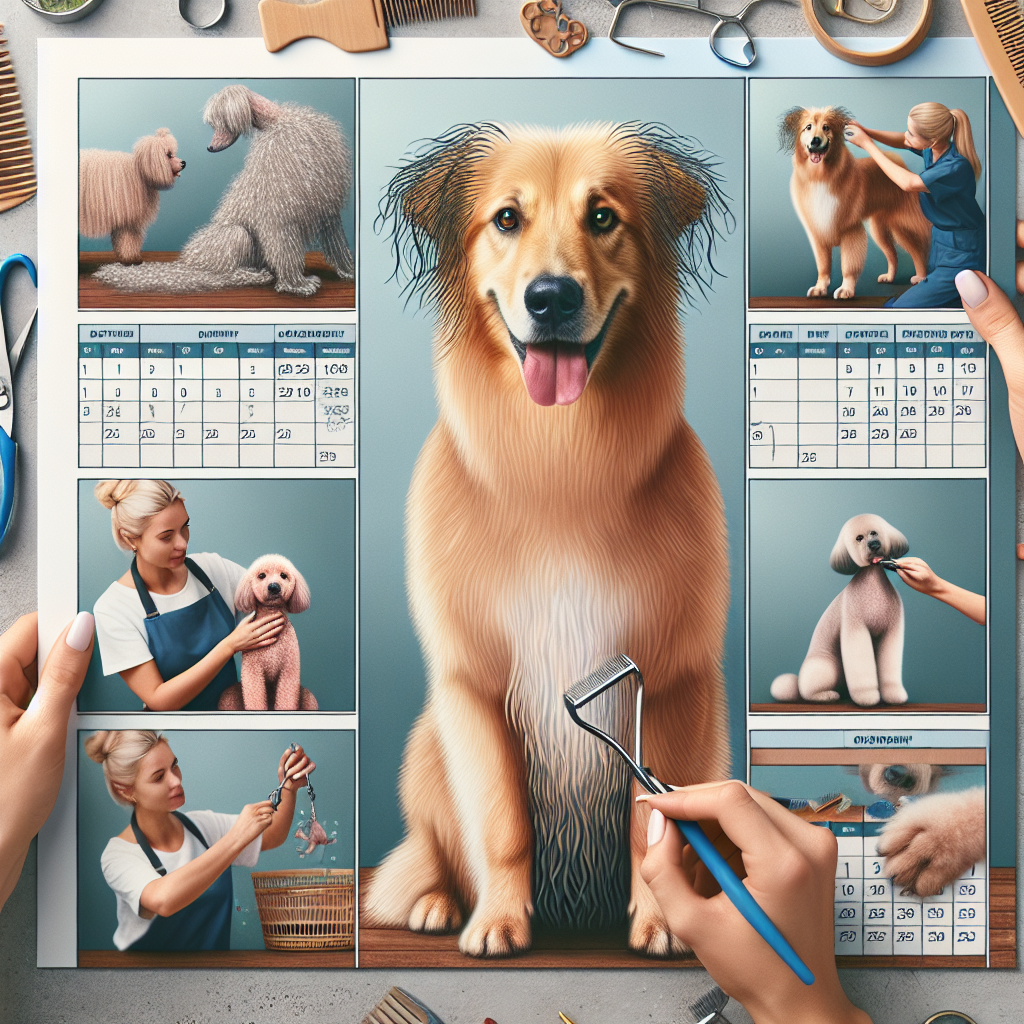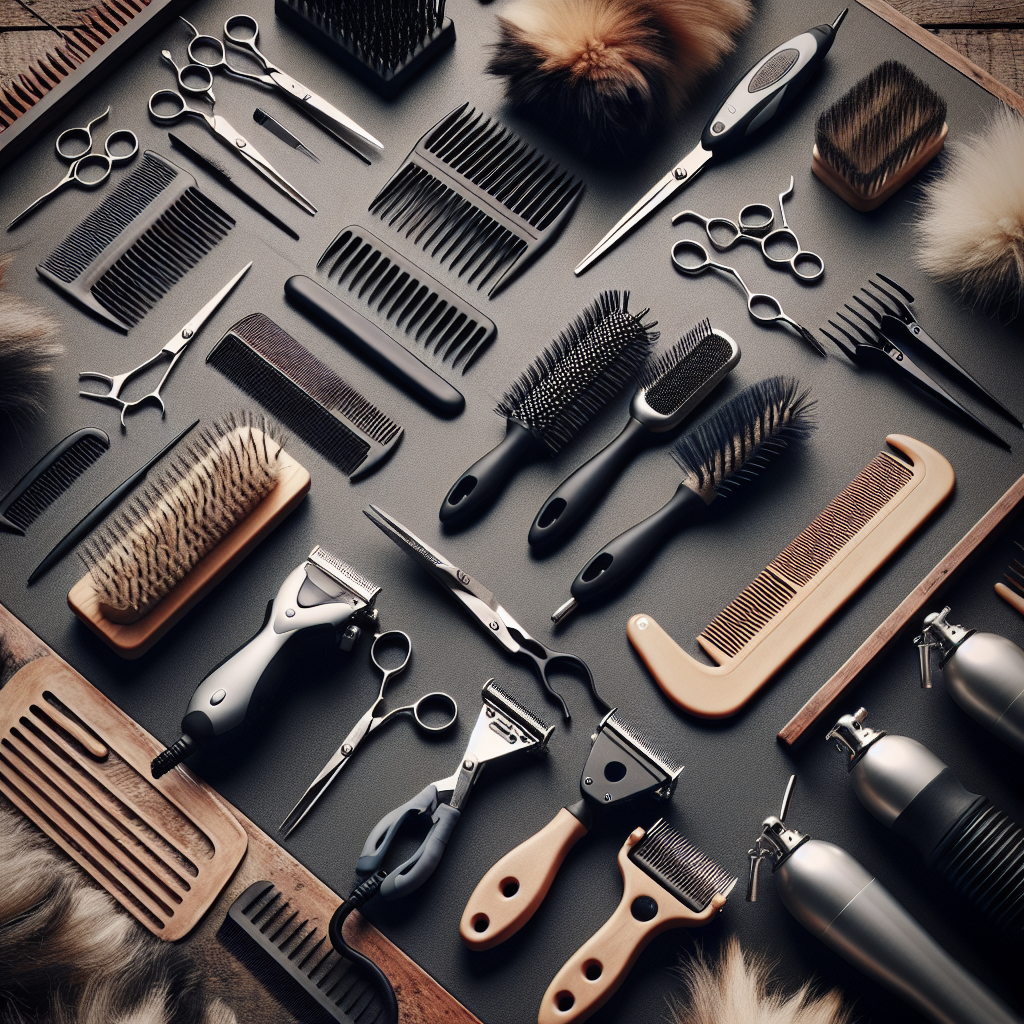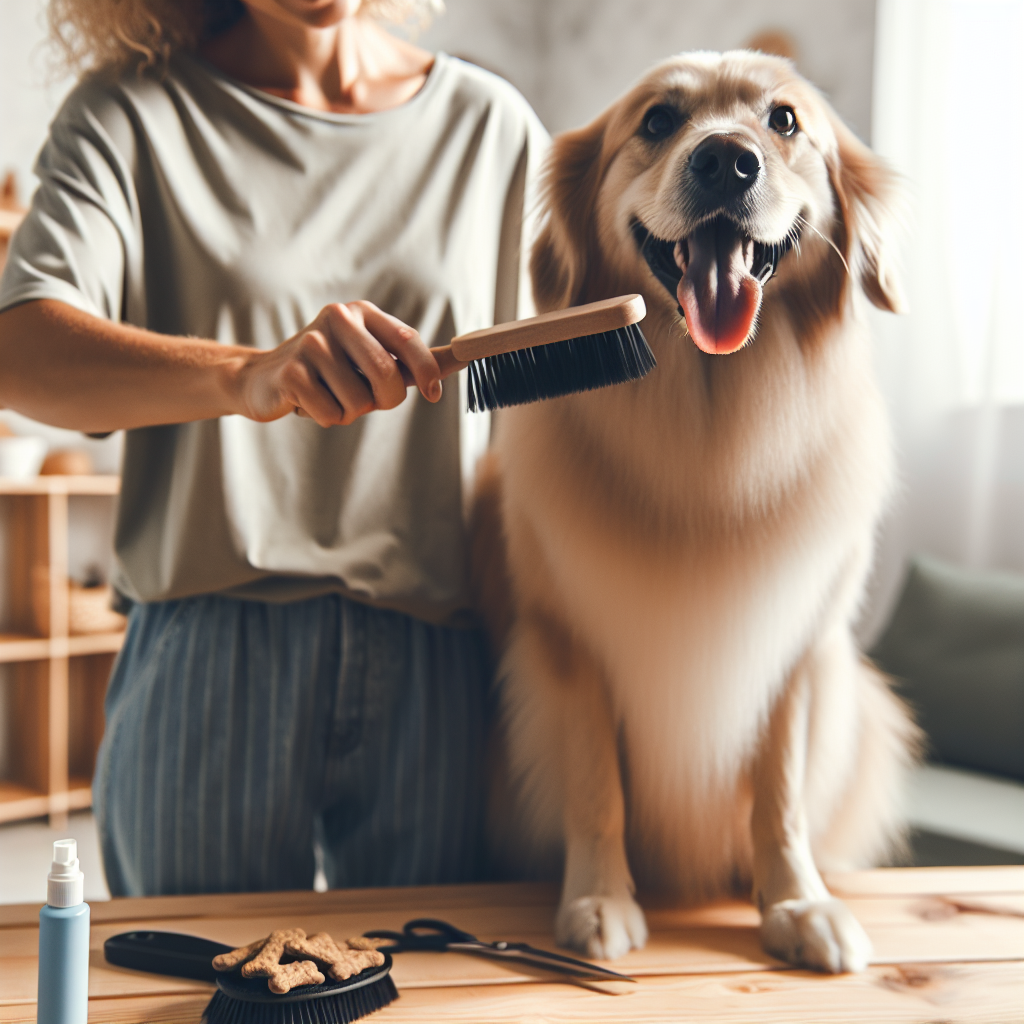Understanding the importance of grooming is key to maintaining your dog’s health and happiness. This article delves into the essential aspects of dog grooming, providing guidance on frequency, techniques, and benefits that contribute to your canine’s well-being.

Knowing Your Dog’s Grooming Needs
Understanding the specific grooming needs of your dog is vital for keeping them healthy and happy. Different factors such as breed, coat type, and health conditions directly influence the frequency and type of grooming required. While the previous chapter discussed identifying these needs, this chapter will focus on the optimal grooming frequency to maintain your dog’s health and well-being.
Dogs with long, luxurious coats, such as Shih Tzus and Collies, typically require daily brushing to prevent tangling and matting, which can lead to skin infections if left unchecked. On the other hand, breeds with short coats, like Beagles and Boxers, can often go a week or more between brushings. Regardless of coat type, a deeper grooming session involving tasks such as bathing, nail trimming, and ear cleaning should be performed regularly but less frequently – typically every 4 to 6 weeks.
Shedding is a natural process for many dogs, and the amount a dog sheds can significantly alter the grooming schedule. Breeds that shed heavily, like Huskies and German Shepherds, might require more frequent brushing to manage the loose fur and help distribute natural skin oils that keep their coat healthy. Conversely, dogs with minimal shedding, such as Poodles, still require regular grooming to prevent their hair from becoming tangled or matted.
Lifestyle and environment play crucial roles in determining grooming frequency. Active dogs that spend a lot of time outdoors may require more frequent baths and brushings to remove dirt, debris, and potential allergens from their coat and skin. Similarly, dogs living in urban environments might encounter pollutants and dirt more regularly, necessitating a more stringent grooming routine to prevent skin issues.
While establishing a grooming routine, consider the specific needs of your dog based on their breed, coat type, shedding pattern, lifestyle, and environment. Regular grooming not only keeps your dog looking and feeling their best but also provides an opportunity to check for any unusual signs or symptoms of potential health issues. Bear in mind that while a general guideline can be helpful, the best approach is to tailor grooming practices to suit your individual dog’s needs, ensuring they lead a happy, healthy life.

Grooming Frequency for Optimal Health
Knowing your dog’s grooming needs based on breed, coat type, and health is foundational, as established in the previous chapter. Building on this knowledge, the frequency of grooming plays a pivotal role in maintaining your canine companion’s health and happiness. A well-considered grooming schedule not only preserves the physical condition of your dog’s coat but also fosters an environment for early detection of potential health issues, such as skin problems or parasites.
The recommended grooming frequency varies significantly depending on several factors:
1. Coat Type: Dogs with long, thick or double coats, such as Huskies or Samoyeds, generally require more frequent grooming than those with short hair, like Beagles or Boxers, to prevent matting and manage shedding. The typical interval might range from weekly for long-haired breeds to monthly for short-haired breeds.
2. Shedding: Shedding cycles also influence grooming frequency. Some dogs shed seasonally and might benefit from extra grooming sessions during these periods to help manage the increased hair loss and distribute natural oils in their coat.
3. Lifestyle: Active dogs who spend a lot of time outdoors may need more frequent grooming than their indoor counterparts. Dirt, mud, and environmental pollutants can accumulate in a dog’s coat, requiring more regular cleaning and brushing to maintain skin and coat health.
4. Environment: The dog’s environment, including the climate they live in and their home setup (e.g., carpeted versus tiled flooring), might also affect how often grooming should take place. Dogs in urban areas may accumulate more pollutants on their skin and coat and therefore might benefit from more frequent baths.
As a general guideline, here are grooming intervals to help establish a routine:
– Bathing: every 1-2 months, depending on the dog’s lifestyle and skin needs.
– Brushing: several times a week for long-haired breeds; once a week or less for short-haired breeds.
– Nail Trimming: every 3-4 weeks, depending on growth.
– Ear Cleaning: once a month, especially for dogs with floppy ears prone to infections.
– Teeth Brushing: ideally daily, but at least several times a week.
Adjustments to these intervals may be necessary based on factors discussed above and the individual needs of your dog as they age or their health status changes. Regular grooming not only keeps your dog looking and feeling their best but also strengthens the bond between you and your furry friend. The next chapter will delve into choosing the right grooming tools, ensuring you have the equipment needed to efficiently and safely groom your dog, further tailoring the grooming process to their specific requirements.

Choosing the Right Tools
Building on the understanding of how often your dog should be groomed for optimal health, it’s crucial to dive into the next essential step: choosing the right tools. Grooming your furry friend with the appropriate equipment is not only vital for their physical well-being but also for enhancing the bond between you. Selecting quality tools that match the specific needs of your dog’s coat type can significantly influence the effectiveness and safety of each grooming session.
Types of Grooming Tools:
1. Brushes and Combs: A vast array of brushes and combs are available, each designed for different types of coats. For instance, slicker brushes are best for removing mats and tangles in medium to long-haired dogs, while bristle brushes are suitable for short-haired breeds who need to shine and smooth their coat. Similarly, a wide-toothed comb works wonders on a tangled coat, and a flea comb is essential for pets with these pesky parasites.
2. Clippers and Scissors: For dogs that require haircuts, quality clippers and safety scissors are indispensable. The clippers should have adjustable blades for different coat lengths. Rounded-tip scissors are safer for trimming sensitive areas such as around the eyes and ears.
3. Nail Clippers: Regular nail trims are necessary to keep your dog comfortable and prevent posture problems. Guillotine clippers, plier-style clippers, and grinders are popular choices. Each type has its specifics, and what works best often depends on the size of your dog and the hardness of their nails.
4. Shampoo and Conditioner: Using a high-quality shampoo and conditioner suited to your dog’s skin and coat type can make a big difference. Hypoallergenic options are available for sensitive skins, and medicated formulas can help with specific skin conditions.
Maintenance of Grooming Tools:
Proper care and maintenance of grooming tools not only prolong their life but also ensure they remain safe and effective. Regularly cleaning and disinfecting brushes, combs, and nail clippers prevents the spread of bacteria and parasites. Clippers should be oiled and blades sharpened or replaced as needed to ensure a smooth and safe grooming experience.
Choosing the Right Tools:
Selecting the correct tools requires understanding your dog’s coat type and grooming needs. Consulting with a professional groomer or veterinarian can provide insights into what tools are best suited for your pooch’s breed and specific coat characteristics.
Remember, the correct tools not only make the grooming process more comfortable and efficient but also ensure that grooming remains a positive experience, laying a foundation for a stress-free routine as discussed in the following chapter. With patience, love, and the right grooming tools at your disposal, you can ensure that your canine companion not only looks their best but feels their best too.

Creating a Positive Grooming Experience
Creating a positive grooming experience is as much about the emotional well-being of your dog as it is about maintaining their physical appearance. After understanding the importance of selecting the right tools for grooming, it’s crucial to ensure that the grooming process itself is a source of bonding and not stress for both you and your pet.
Introducing Puppies to Grooming
Puppies are more receptive to new experiences, making it the perfect time to introduce grooming routines. Start with short, gentle sessions focused more on getting them accustomed to being handled and less on the actual grooming. Use lots of praise and treats to associate grooming with positive experiences. This foundation is vital in preventing anxiety related to grooming in the future.
Dealing with Anxious Dogs
For dogs that show anxiety during grooming sessions, it’s essential to identify their stress triggers and work on desensitizing them to these. If a specific grooming tool scares them, introduce it slowly, without forcing interactions. Let the dog approach the tool on their terms, rewarding curiosity and courage with treats and affection. Always speak in a calm, soothing tone to reassure them.
In cases of extreme anxiety, it might be beneficial to consult with a professional dog trainer or a veterinarian for advice on behaviour modification techniques or possible calming supplements or medications.
Creating a Stress-free Grooming Routine
Consistency is key in creating a stress-free grooming routine. Try to groom your dog at the same time and place to establish a routine that your dog can anticipate and become accustomed to. Keep grooming sessions short and enjoyable, gradually increasing the time as your dog becomes more comfortable with the process.
Always be patient and gentle, remembering that grooming should be an enjoyable experience for both of you. If you or your dog becomes frustrated or overwhelmed, it’s okay to take a break and try again later.
Regular grooming is not just about keeping your dog clean; it’s an opportunity to strengthen your bond. Paying close attention to your dog’s comfort level and responses during grooming sessions will ensure that this routine care is a positive experience, contributing to their overall well-being and your relationship with them.
Conclusions
Regular grooming is more than just keeping your dog looking good—it’s about their health, comfort, and the bond you share. Tailor the grooming schedule to your pet’s needs, ensuring a happier, healthier life for your furry friend.





